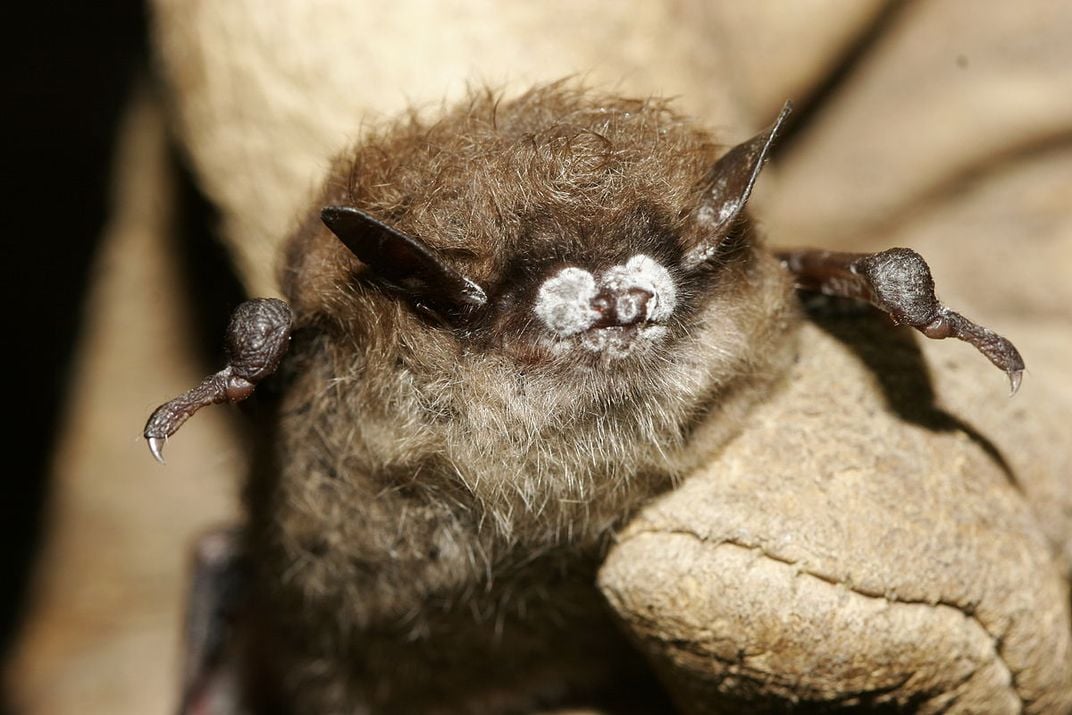The Little Brown Bat’s Mighty Talent
Accounting for body size, the little brown bat lives longest of any mammal–but no one knows why
/https://tf-cmsv2-smithsonianmag-media.s3.amazonaws.com/filer/1b/0a/1b0a0f7c-5260-4a23-a956-83b5f5195008/5600306085_e02d460839_o.jpg)
On this day in 1937, a scientifically important bat met researchers in Mashpee, Massachusetts.
The researchers put a band on a little brown bat that was roosting with a summer colony of other Myotis lucifugus–the small brown bats that can be found in many places throughout North America. Records from the time indicate that the bat was a healthy adult. So far, so good. But that same bat was found by another group of researchers in 1960–when, those researchers wrote, it must have been at least 24 years old.
Later researchers have put the bat’s age at 23, but either way, the discovery provided momentous insight into the bat’s life and into the ways that mammals age. While a 24-year-old human is just getting started, many small mammals only live a few years. Since 1960, little brown bats ranging in age between 16 and 35 have been found. The oldest-lived bat ever found was a 41-year-old Brandt’s bat from Russia.
The experience was surprising because, generally speaking, life span in mammals is linked with size: bigger animals live longer, writes Rachael Rettner for Live Science. “Bats are an exception to this rule.” In fact, taking body size into account, the little brown bat is the longest-lived of any creature, according to Canadian researchers who published in Northwestern Naturalist.
Why bats live so long is unclear; it may be related to hibernation, although some who have studied long-lived bats note that even non-hibernating species live longer than expected. It's possible that the bats' genes are somehow particularly resistant to damage, researchers studying the Brandt's bat reported.
The little brown bat is particularly interesting because it’s “one of the smallest, most common and widely distributed bat species in North America,” the researchers, led by Katie R. N. Florko, write. Studying the bat now is important because white nose syndrome is killing off hibernating bats–especially the very common little brown bat–in the millions, according to the USGS.

WNS is caused by a fungus that shows up as white spots on bat noses. It kills bats by causing them to wake up during hibernation, depleting their carefully-rationed energy stores intended to get them through a full winter. USGS researchers found that bats with WNS “used twice as much energy as healthy bats during hibernation and had potentially life-threatening physiologic imbalances that could inhibit normal body functions.”
But studying long-lived species is also important for understanding the genetic basis of longevity, writes Rettner. However, the bat’s longevity is still poorly understood–although with the crisis of WNS decimating bat populations and catalyzing scientists, it’s possible that added study will produce an answer.